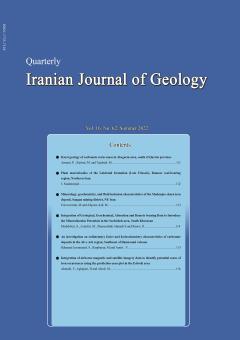-
-
List of Articles
-
Open Access Article
1 - Karst geology of carbonate rocks mass in Abegarm area, south of Qazvin province
P. Armani M. Karimi M. Tajabadi -
Open Access Article
2 - Plant macrofossiles of the Laleband formation (Late Triassic), Ramsar coal-bearing region, Northern Iran
JAVAD SAADATNEJAD -
Open Access Article
3 - Mineralogy, geochemistry, and fluid inclusion characteristics of the Madanjoo skarn iron deposit, Sangan mining district, NE Iran
M. Fotovat Jami Masoud Alipour-Asll -
Open Access Article
4 - Integration of Geological, Geochemical, Alteration and Remote Sensing Data to Introduce the Mineralization Potentials in the Sarbisheh area, South Khorasan
S. Modabberi M. Azarifar S. Shamsoddin Ahmadi D. Raeisi -
Open Access Article
5 - An investigation on sedimentary facies and hydrochemistry characteristics of carbonate deposits in the Ab-e Ask region, Southeast of Damavand volcano
S. Rahmani Javanmard Mohsen Ranjbaran V. Amiri -
Open Access Article
6 - Integration of airborne magnetic and satellite imagery data to identify potential zones of iron occurrences using the prediction-area plot in the Esfordi area
Fardin Ahmadi Hamid Aghajani Maysam Abedi
-
The rights to this website are owned by the Raimag Press Management System.
Copyright © 2017-2025







